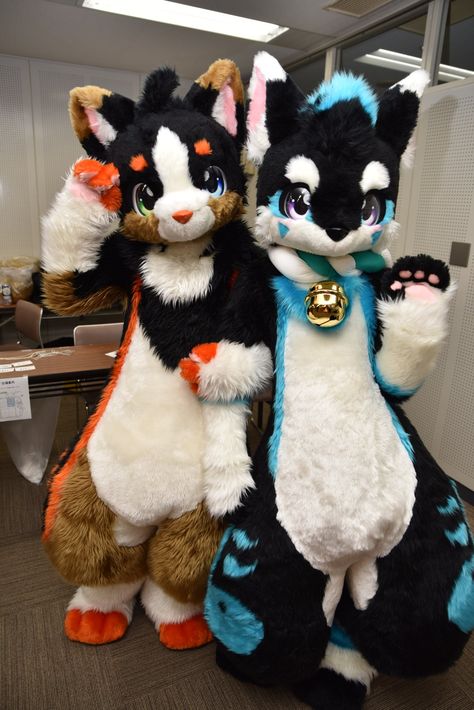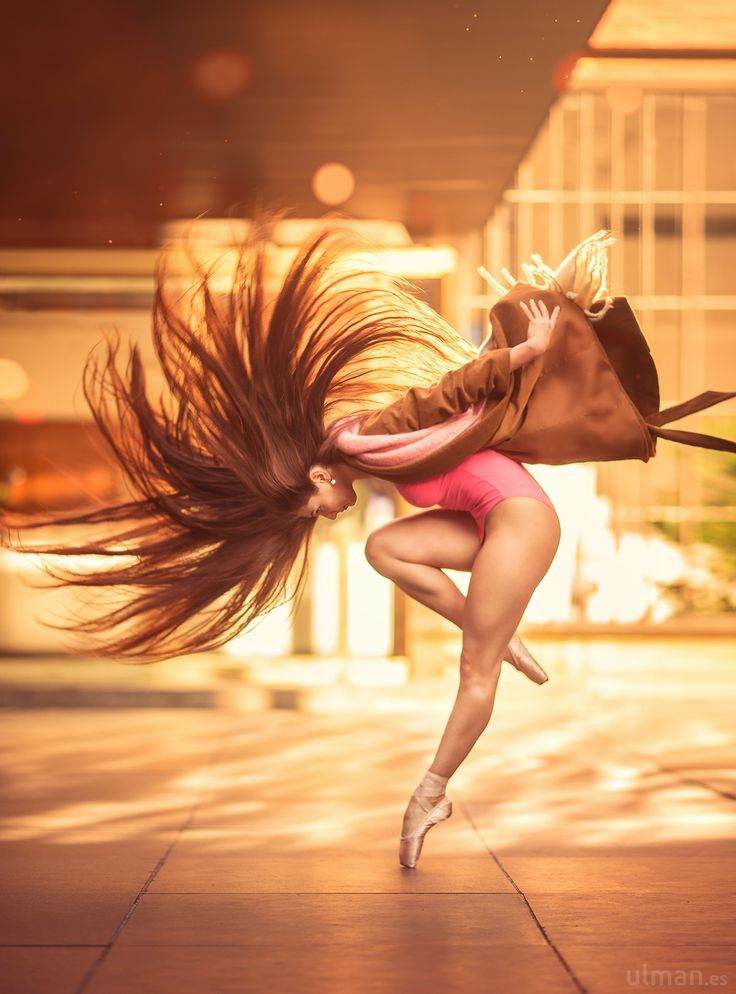How long to learn salsa dancing
How Long Does it Take to Learn Salsa Dancing?
Barbara Tucker
It seems like everybody wants to learn Salsa. Salsa dancers are admired because they’re sexy, spontaneous, and clearly having fun. To be sure, if you can dance Salsa, you’ll have no shortage of dance partners.
Many Latin clubs have a live band for you to dance to.How long will it take to learn Salsa?
The amount of time it takes to learn depends on four things.
- What level do you hope to achieve? Do you just want to get by or are you looking to be good or great?
- What do you know about Salsa now? For instance, if you’ve taken some Zumba classes, you’ve been exposed to some basic Salsa steps.
- When are you going to dance Salsa? Is it sooner or later?
- Speaking of time, how much are you willing to devote to learning Salsa?
Disclaimer: Without meeting you, it’s not possible for me to say how long it’ll take you to learn Salsa. That’s because everyone is different. However, what I will do is give you an idea of what someone with average ability can do in a set amount of time.
How much time do you have to learn Salsa?
Do you have one week, one month, one year? Then, that’s how long it will take to master Salsa. Let me explain.
One Week
- The degree of difficulty: Extremely ambitious.
- Amount of commitment: Total immersion.
- Result: Very basic Salsa with just a few steps.
If this is a dance “emergency” and you’ve got to learn Salsa in a week then you’ll need to get an instructor at a good Salsa school or ballroom dance studio and schedule multiple lessons per day. In addition, you’ll go to group classes and dance parties. And, don’t forget to get there early and stay late to practice. But who will you practice with?
Here you go – someone to practice with!In fact, you should have no problem finding someone to dance with. Practice and repetition are what it takes to develop muscle memory. That means you don’t have to think so much about what you’re doing. It’s the same as when you drive, isn’t it? After you do it enough times, you’re kind of on automatic.
That means you don’t have to think so much about what you’re doing. It’s the same as when you drive, isn’t it? After you do it enough times, you’re kind of on automatic.
One Month
- The degree of difficulty: A challenge.
- Amount of commitment: Stay focused.
- Result: A few combinations of steps to repeat throughout the song.
If you have a month to learn Salsa, you can cut back to 2-3 lessons per week. You’ll need to keep your lessons close together to avoid forgetting steps.
To be able to get by in Salsa you’ll probably need 10-20 private lessons. Furthermore, spend some time on an easier dance like Merengue. You’ll find that Merengue will help refine your moves. It’ll also teach you how to execute the turns and spins that are a big part of Salsa.
Don’t forget to take as many group classes and dance parties as you can. And, here’s a great idea. Why don’t you get a few of your fellow students together to go to a Latin club? You know, to kind of take a test drive on the dance floor? Knowing what to expect will help with the jitters.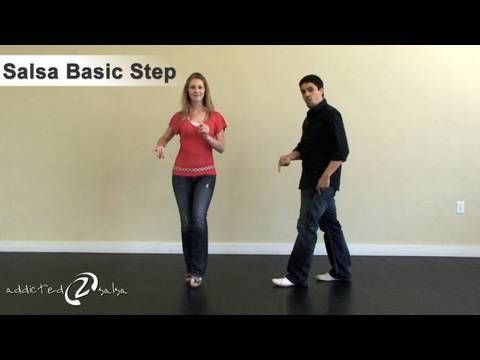
One Year
- The degree of difficulty: Leisurely.
- Amount of commitment: Cruising along, enjoying the ride.
- Result: An accomplished Latin club-style dancer.
If you have a year to master Salsa and Latin dancing, you’re in for a treat. In contrast to one week or one month, learning like this is pressure-free. Your style will be smooth and fluid. Dancing with different partners will be a pleasure. It’s gonna be a piece of cake!
Learn about the different styles of Salsa in this Dance Safari post, “Learn to Dance Bachata – Start Today”. Also, to help you stay up-to-date on the latest Salsa music, check out NewGenSalsa.
Keep in mind that when you go to Latin clubs, you’re gonna want to be able to do some Bachata and Merengue, as well. While it’s true that the majority of songs you hear at the club will be Salsa, you’ll be having too much fun to sit out the other dances. To be sure, with a year of instruction under your belt, you won’t have to!
LIKE, SHARE and FOLLOWThanks!
Like this:
Like Loading. ..
..
- The Ballroom Dances
Published by Barbara Tucker
I'm a ballroom dance professional with over 40 years experience as an instructor, supervisor, manager, studio owner, dance director, and now, dance blogger. My aim is to guide curious people into the cradle of partner dancing, both social and competitive. Looking for a life-changing experience? Come on in! View all posts by Barbara Tucker
How Long Does It Take To Learn Salsa Dance – Dancewear Tips
report this ad
Everyone can learn to dance Salsa. It is a rewarding dance style to learn, and all it takes is a little determination, hard work, and patience. However, many of us have an end goal in mind and want to know how long it takes to learn Salsa dancing.
How long does it take to learn Salsa dance? It can take anywhere from 8 to 10 weeks, depending on how often you practice after your dance lessons.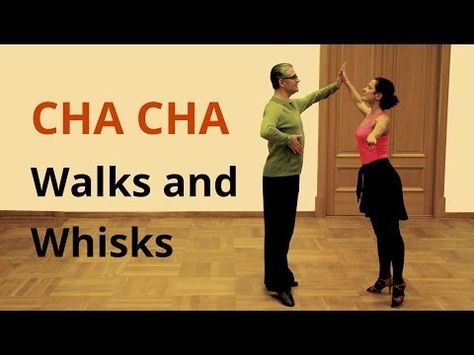 However, ten weeks will be enough time for you to learn the basic steps and patterns to dance comfortably in social settings, such as clubs.
However, ten weeks will be enough time for you to learn the basic steps and patterns to dance comfortably in social settings, such as clubs.
When I just started learning to dance Salsa, I felt I could bust some Salsa moves after a few classes. I was positively surprised by how easy it was to learn basic Salsa steps. So, if I could do it, anyone can. Believe me; I was not much of a dancer before I started learning Salsa dance. But I was motivated because I didn’t want to be that person sitting in the chair all evening during social events. That was me before I stepped my feet into Latin dance waters.
Now I go comfortably to the dance floor during parties, not because I am a great dancer but because learning Salsa and other Latin dance styles has given me confidence on the dance floor.
“Dance to express, not to impress!”
Factors That Determine How Fast You Will Learn To Dance Salsa
There are many factors to consider when determining how long it will take to learn Salsa dancing. Let’s explore them one by one.
Let’s explore them one by one.
1.
MotivationMotivation is an important factor in learning any skills, and Salsa dancing is no exemption. What motivates you? Do you want to learn to dance Salsa for a special occasion? Is it to lose a few extra pounds? Is it to relieve the stress? Is it to build your confidence? Is it the ability to dance in social events whenever an opportunity occurs?
Whatever your motivation is, you need to be consistent to learn Salsa dancing within the time period mentioned above. The bigger your goals are, the likelihood of you sticking around and learning faster improves.
2.
Putting yourself out thereIt is important to put yourself out there when you start learning Salsa and attend as much as possible Salsa dance social events. It won’t be easy at first, but you don’t have to go to a dance event with a goal in your mind to dance that evening. Instead, you can just observe other people and their dance styles and techniques.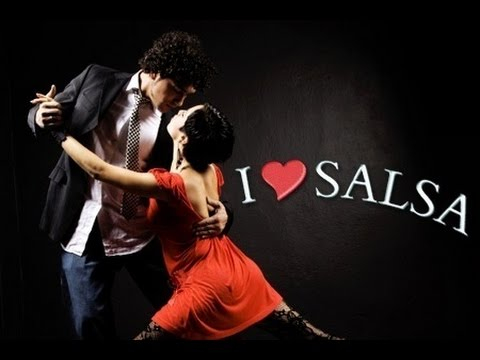
Trust me; there will be some great dancers that will blow your mind away and some not-so-great.
I was one of those not-so-great dancers when I attended Salsa dance nights the first few times, haha. Although my dance moves were looking much better in my mind, it didn’t discourage me from continuing to dance and learn this magnificent dance style.
My suggestion would be to go to Salsa dance parties with someone you trust and are comfortable with. It could be your friend, partner, or anyone you know you will have a great time with no matter what.
Just remember that nobody will judge you for your dance skills at Salsa parties. People come there with many different dance knowledge skills. People come there to have fun, and it is a safe zone to bust Salsa moves without any hesitation.
The more you practice, the sooner you will get better. It would be a waste of your time and money if you don’t practice after dance lessons or dance in social settings, such as clubs or other Salsa parties.
3.
Attending Salsa Dance ClassesRegular attendance of Salsa lessons is the easiest and the fastest way to learn this dance style. Most dance schools offer various classes and timings, so you pick the class that best suits your needs and schedule. Make sure you can commit to the schedule every week. I know life happens, and you may need to skip one or two lessons but make sure you practice at home.
A dance school that I have been attending to dance various Latin dance styles for the past two years offers 10-weeks group Salsa classes for an hour, once a week. It is enough time to learn the basic moves to dance in social settings comfortably. Of course, it is very beneficial if your practice at home those steps and moves you have learned in the class.
Most dance schools offer drop-in classes where you don’t have to register if you don’t feel if you will like it and don’t want to commit. You can just show up and attend the class without any obligations.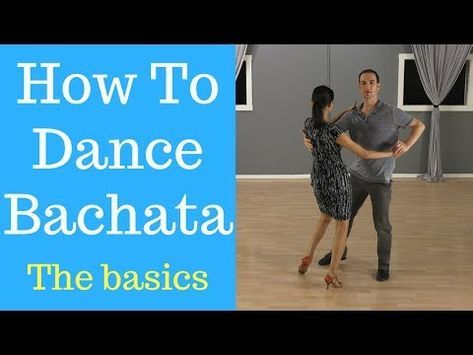 This is actually how I fell in love with Salsa dance. I attended drop-in classes and decided to sign up for 10-week Salsa lessons. So basically, you have nothing to lose if you decide to try it out.
This is actually how I fell in love with Salsa dance. I attended drop-in classes and decided to sign up for 10-week Salsa lessons. So basically, you have nothing to lose if you decide to try it out.
You get to meet wonderful new people who have the same interests as you do while attending group Salsa classes. They can keep you accountable to keep showing up to the dance classes. These people are beginners as you are, so there is nothing to be ashamed of because they are in the same boat.
Finally, you don’t have to have a dance partner when you attend group classes. There is always someone without a partner that you could partner up with. I didn’t have a dance partner when I decided to learn Salsa, but there was always someone without a partner that I could dance with. Having different dance partners allows you to become a better dancer by learning other people’s styles.
4.
Commitment LevelLike anything in life, the more you commit and practice, the better off you will be.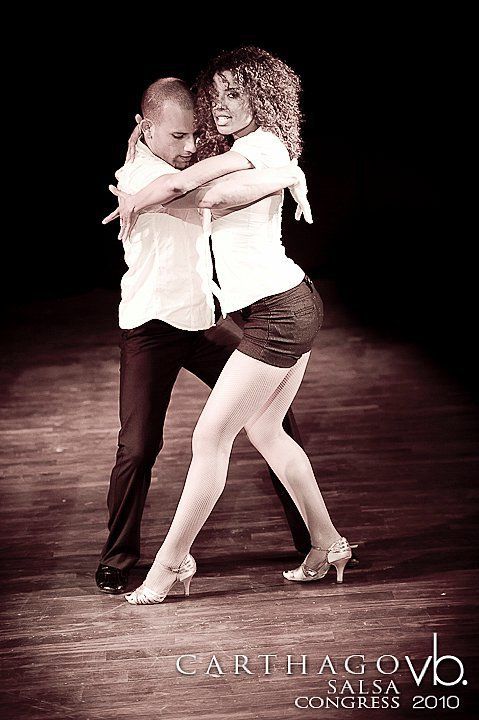 Coming to the Salsa dance lessons regularly, practicing at home, and going to Salsa parties will help you reach your goals quicker.
Coming to the Salsa dance lessons regularly, practicing at home, and going to Salsa parties will help you reach your goals quicker.
5.
Knowledgeable dance instructorsI was lucky that dance instructors who taught me Salsa dance have an excellent background in Salsa dance and are amazing dance instructors. Having proper instructions while learning to dance Salsa will help you reach your goals quicker. You need a passionate dance instructor that is willing to assist others in dancing and give each person the proper attention to help them achieve their goals. “A student can usually only be as good as their teacher.”
6.
Practicing Salsa at homeIt really doesn’t matter whether you have someone to practice with at home because it is totally possible to practice Salsa by yourself.
I practice the steps soon after the dance lesson, so I don’t forget them until the next class. Whether you are lead or follow, you can practice by yourself the steps you learned in the class.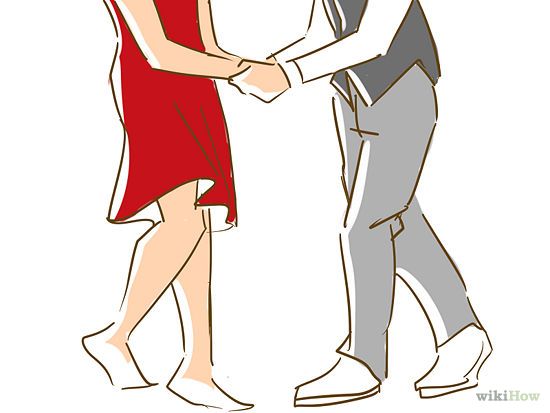
Another option would be to ask someone from the class to meet up and practice together. There is always someone eager to practice and improve as much as you are. I have practiced alone and with someone from the group classes, which helped me improve my dance skills tremendously.
7.
Listening to Salsa musicListen to Salsa music whenever you can, even if you are not dancing. It is important to get familiar with Salsa music because you need to understand what you are dancing to and find different beats. Salsa music is fun, energetic, and romantic, so it won’t be a hard task to do.
To find out if you can dance Salsa to different music styles, click here.
How Many Hours A Day Should You Practice Salsa?
Usually, Latin dance studios offer one hour Salsa lessons a week. However, don’t let that stop you from practicing even more. You can practice as much as you want or are allowed depending on your schedule and other life obligations.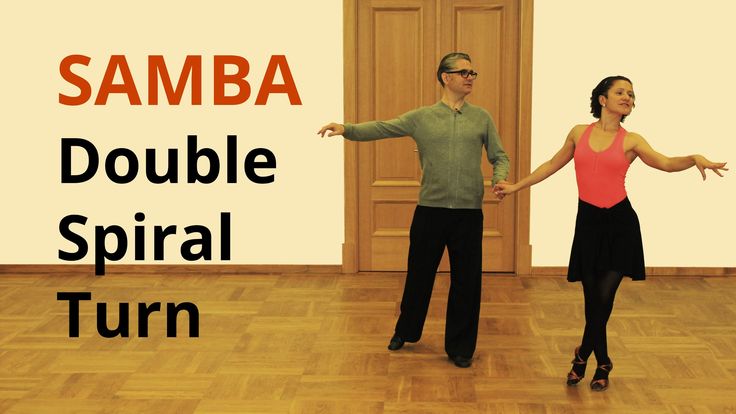
If you can, try practicing one to two more hours per week besides your weekly lesson with the dance instructor. Your muscles will remember the moves quicker, and you will get better at Salsa dancing in no time.
The best part about learning Salsa dance is that you don’t need a partner to practice, and you can do it at home when you are cleaning, just relaxing, or just bored. It is an excellent way to kill boredom.
Of course, it is always better to practice with a partner but not having a dance partner is an opportunity to improve your dance moves and technique.
Is Salsa Dancing Hard To Learn?
Salsa dance is one of the most rewarding Latin dance styles that you could learn. Salsa is energetic, fun, and sensual that could wake up Latin rhythm in almost everyone.
The basic Salsa dance steps are not hard to learn; however, advanced steps are more complicated, so it will require a little bit more dedication, time, and effort on your end.
It is up to you how difficult or easy you want the Salsa moves to be. As a beginner, the key is to keep the steps very simple. Practice your basic steps as much as possible, and once you are very comfortable with the basics, move to more complicated step patterns.
As a beginner, the key is to keep the steps very simple. Practice your basic steps as much as possible, and once you are very comfortable with the basics, move to more complicated step patterns.
These basic Salsa steps and patterns can look beautiful on the dance floor if you master them. And, you can dance Salsa socially by knowing only the basic step patterns.
So to sum up, Salsa dancing is not difficult to learn. It all depends on what your ultimate goal for Salsa dance is. If you want to learn Salsa for a special occasion, you don’t need to focus on more complicated moves. However, if Salsa is in your blood and planning on attending multiple dance events in the future, it would be beneficial for you to invest more time and effort into learning intermediate and advanced steps. I promise you that you will not regret it! 🙂
Final Words
Learning Salsa can take up to 10 weeks, but it is a process in which you are guaranteed to make new friends, improve your health, and have lots of fun in the meantime. If you follow the tips I have provided earlier in this article, I am sure you will be proficient in Salsa dancing in no time.
If you follow the tips I have provided earlier in this article, I am sure you will be proficient in Salsa dancing in no time.
Have fun dancing!
90,000 12 life hacks, to quickly learn how to dance from Mamita DanceDances
Author: Pavel Gather
Psychologist, Lecturer Salsa and Tango
Dances
Author: Pavel Pavel
Psychologist, Lecturer Salsa
on At the start, you always want to get a quick result. When it doesn't happen, the hypothesis arises that everything takes time. After a conditionally acceptable time, humility comes to mastering pair dances, which, perhaps, is not given, and I will just do what I learned somehow.
This is the most common story of those who believe that the mere act of attending a pair dance class is enough to learn how to dance.
Absolutely not. If you want to really dance well, you have to make an effort outside of the dance class. A good teacher will definitely be needed, but the initiative should be on your side.
A good teacher will definitely be needed, but the initiative should be on your side.
1. Listen to music
The most common and accessible advice that is given already in the first lessons. And it definitely works. Music creates a certain atmosphere of the dance and intuitively you want to move to it. It doesn't matter where you listen to music - in the car, on headphones while walking or doing household chores.
An addition that will help you dance better is your active participation in the music. Sing along, dance or simply beat musical accents with any free parts of the body. In the subway, for example, it is enough to tap out bright moments with your fingers, in the car to sing along with sounds, and at home you can jump for pleasure.
2. Watch videos of good dancers
It's complicated, but also obvious. It’s more difficult, because without recommendations from more experienced dancers, unfortunately, it’s not so easy to find a good quality video on the net (I mean not the resolution quality, but the content itself).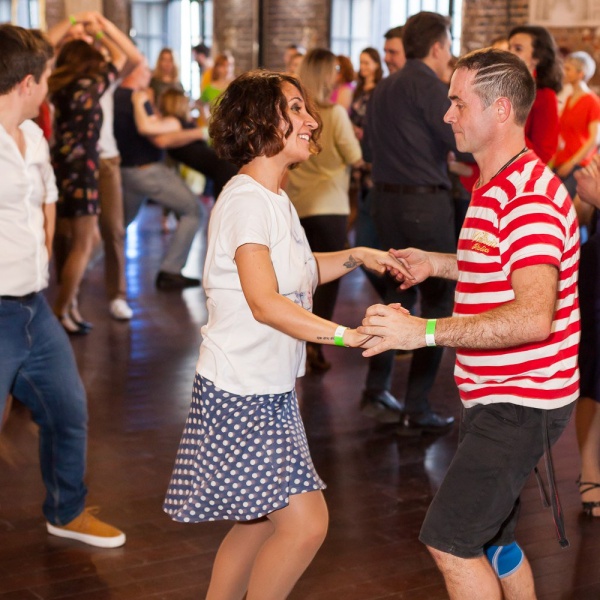
Meaningful video viewing is about building an understanding of HOW dancers make a particular impression on a partner or viewer. Technology is at the heart of everything. Understanding how the pros do it is a big step forward.
It is important to distinguish a show from a disco dance, a staged performance from an improvisation, a stylized dance from an authentic one, etc. Ask for recommendations and dance teachers will always throw off a couple of videos of worthy landmarks.
Tango Z. Showreel.
Online modern tango courses
Tango nuevo is the most advanced version of tango. We can quickly learn to dance from zero to a steep level.
| View details |
3. Dance in salsatecas/milongas/discotheques
A very delicate moment when it is worth coming to the first party. From a technical point of view, most students in 1-3 months have a sufficient set of figures and techniques to come and dance calmly. Psychologically, the same moment can be stretched out for an indefinite time. After all, it is imperative to “not lose face”, “learn more figures” and be sure what to do in case “there is an unfamiliar movement”.
Psychologically, the same moment can be stretched out for an indefinite time. After all, it is imperative to “not lose face”, “learn more figures” and be sure what to do in case “there is an unfamiliar movement”.
In fact, the partygoers don't really care (except for a small layer of non-professional teachers who want to help inexperienced dancers by treating them as customers in the future). It is important to come and try dancing after a month of classes. You can only with friends or guys from your group. This will be enough to feel the adrenaline and inspiration from the dance.
4. Dance with partners or partners not of your level
The conventional wisdom that you need to practice in groups of your level does not withstand the test of experience. Perhaps now your eyes widened in surprise, and you want to meaningfully read the phrase again. Yes, you saw everything correctly: when you dance with a partner of your level, you don’t grow anywhere.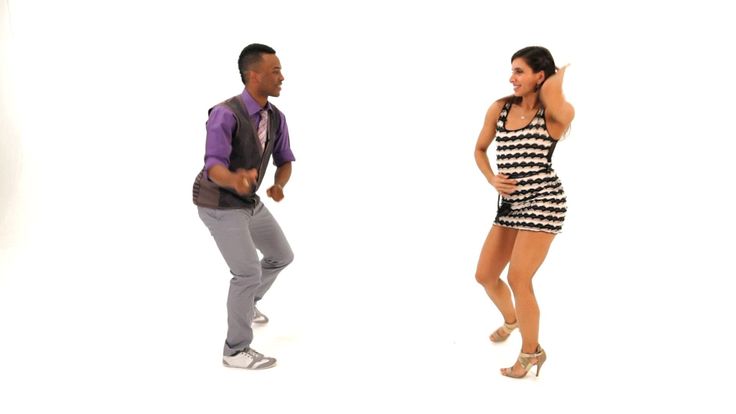
It's important to understand that not only does it work one way and you have to dance with cooler dancers, but it works even more effectively the other way. It is no coincidence that teaching pair dances dramatically raises the level of the teacher himself. You have an endless stream of very beginner dancers.
How it works. A more experienced partner needs to be "stretched". It's easy and obvious. With beginners, you need to take more initiative on yourself, see the general pattern of the dance more widely, turn on and insure more, try to be an example and be more careful. The quality of interaction begins to grow significantly. And wonderful partners too.
Dancing with partners of your level doesn't make you grow. Dance with both beginners and more advanced dancers
Dominican Bachata Women's Style Online Course
Want to learn how to hypnotize those around you with the most appetizing part of your body? On the course we will tell you all the secrets.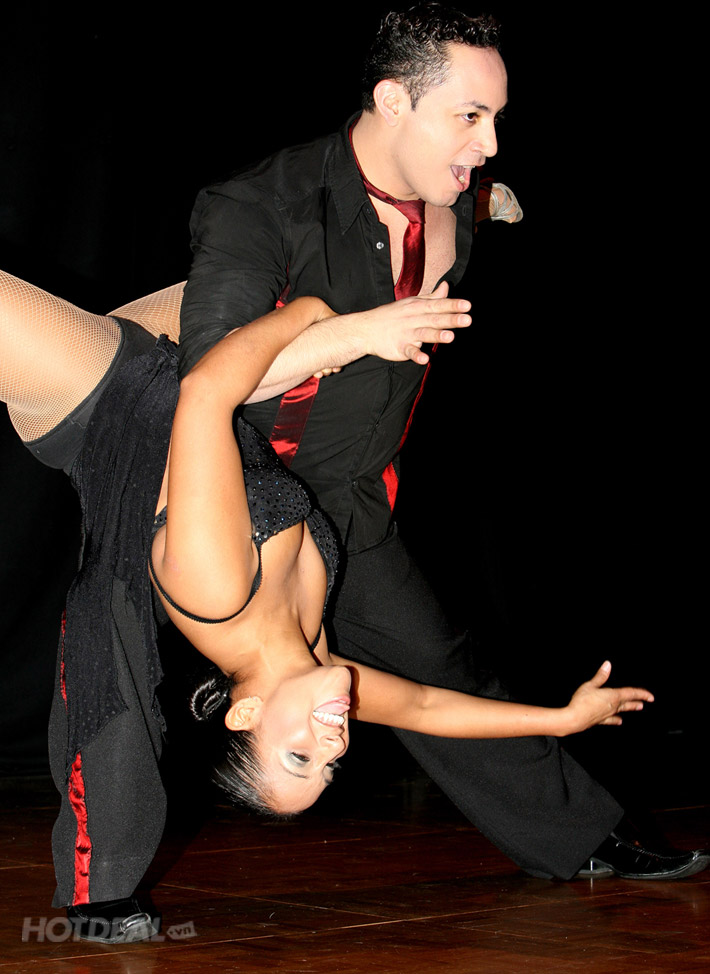
| Interesting |
5. Learn to dance for a partner and for a partner
Turks and Argentines are one of the best partners in the world. In Russia, partners are highly valued. Why? The answer is simple. In Argentina and Turkey, it is not questionable for men to ask another man to lead in one piece or another and give feedback on the quality of the lead. For them, it will be a great shame to hear moralizing from a partner, or even more so to be known in the community as an insecure partner.
In Russia, due to the constant, often far-fetched, opinion that there are more women in pair dances, partners calmly get up and study their partner's part. Such partners then grow into very cool dancers and teachers. In no case do this at parties, only in class. Here we are talking only about the learning strategy. At parties, be yourself.
6. Do not memorize the links
Always try to look deeper and understand the through principle and idea of movement. Understanding what and how is done will make it possible to independently generate any sequences and chips.
Understanding what and how is done will make it possible to independently generate any sequences and chips.
Human memory is limited and there will always be a moment when something will escape and your repertoire will be limited by the size of RAM.
In Argentine tango, for example, there are seven levels of movement construction that, when mastered, will allow you to make millions of combinations. And how many dance sequences can you really remember? In rueda, more than 150 figures dance in a rare circle. It's hard to keep more in mind.
7. Develop your body
Many years of experience in teaching couple dance shows that as soon as everyone pairs up in a class, any progress in individual style ends. But it is the individual style that distinguishes everyone at the disco: partners change, and style is always with you.
The body as the main instrument of dance must be very plastic, responsive and emotional. Surprisingly, not all pair dance schools have a general physical warm-up. It is vital to tune the body and understand how it works.
It is vital to tune the body and understand how it works.
You can always train extra and concentrate more on the basic steps, as their true value is as body work. The sequence of steps is, in fact, the simplest thing that can be in pair dancing. The quality of individual performance determines the craftsmanship.
8. Try on the images of inspiring dancers
A psychological life hack for those who have already mastered the steps, but still feel that there is not enough brightness and drive. Most are terribly afraid of being someone else's "clone". Here the action is the same as under the influence of hypnosis - the more you resist, the more you plunge into an altered state of consciousness.
With a high degree of probability, you are already dancing like someone else's "clone". A meaningful fitting of someone else's image is that you mentally take the image of the one who inspires you (inspiration is critical in this case) and "put on" yourself.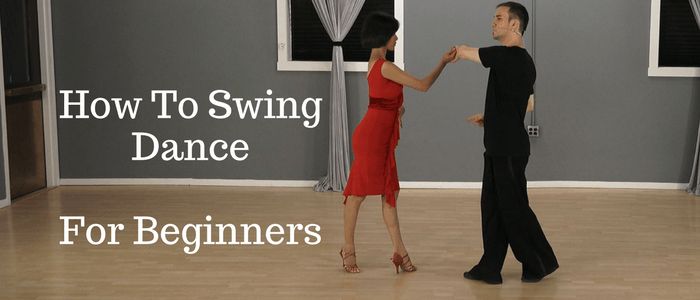 Then you start dancing and trying to feel in general how it is to be able, for example, to be the best partner or the sexiest partner in a disco. This is much more difficult than it seems. But it works extremely efficiently.
Then you start dancing and trying to feel in general how it is to be able, for example, to be the best partner or the sexiest partner in a disco. This is much more difficult than it seems. But it works extremely efficiently.
9. Dance to offbeat music
Habitual rhythms keep you tight. Tango salon or speedy timba leave little room for experimentation and fantasy. Pattern dancing is always noticeable and is reserved for beginners.
The truly new is born outside of the usual. Look for places to experiment. If there is no place, organize self-training. The main thing is not to get carried away, because music determines the style. We bring something new to pair dances, rather than trying to change them.
Search, improvise, don’t be afraid to go beyond, develop in different directions, be inspired by music atypical for the style
10. Try your hand at basic dance directions
dances exist according to their own non-choreographic laws.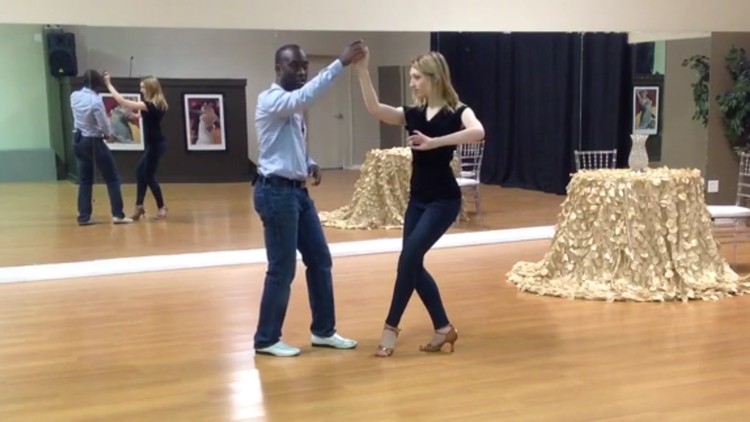
This is the deepest delusion, which has turned into a ceiling for the qualitative development of partner dances. After all, all professional dancers, for example, in salsa or bachata, build their ideas on the basic choreographic principles.
Do not think that choreography is only applicable on stage. Any meaningful movement of the body can be choreographic. In general, try classical or modern choreography. Basically, hip-hop can work too.
11. Look for battle sensations
Pair dances return us to an active position of manifestation of our body. As in the days of our ancient ancestors, we impress the members of the opposite sex by how dexterous, hardy, sexy, etc. we are. Modern laws of the jungle in the entourage of big cities.
If you look around the dance floor, it becomes clear that the majority are clearly herbivores (not in the sense of vegetarians, but in relation to those around them). I am sure that predators are always more interesting in terms of the attractiveness of the image - try to find a counterbalance among herbivores, for example, a cat woman or a lion man.
I am sure that predators are always more interesting in terms of the attractiveness of the image - try to find a counterbalance among herbivores, for example, a cat woman or a lion man.
The conversation is about an internal position, not about aggressiveness. Lability and lack of control are inherent in adolescents, and not in adult self-sufficient people.
Accordingly, even a training or friendly battle gives, on the one hand, practical skills - to make a bright sequence of movements, bring an idea to a climax, show a spectacular feature, on the other hand, develops the psychological basis of the dance - self-confidence, resistance to extraneous attention, self-control and self-control in complex elements.
12. Communicate with professionals
The environment shapes the internal position. Basically, real passionaries of the dance community are ready to openly talk, discuss and support the development of dance in every possible way. Universal principles and the ideas they articulate have a much longer and more practical perspective than meets the eye.
Universal principles and the ideas they articulate have a much longer and more practical perspective than meets the eye.
Accept that, for example, behind the words "listen to your partner" is not only a beautiful metaphor, but also a practical skill to literally listen to your partner. At the same time, always treat every thought, even the most respected teacher, as a private opinion.
Your skill will lie in finding the scope of the idea even in conflicting opinions. Most often, the contradiction is speculative and the truth lies in the angle of perception or situationality.
Your dancing growth will stop sooner or later. This can happen at the level of three basic steps or years of experience in teaching and show performances. Regardless of your level, the suggested 12 life hacks can get you off the ground and greatly accelerate your dance growth. There is no way here without your motivation and activity. Take your dance development into your own hands. 9Ol000 Dangerous sexuality
Salsa: destroyers of stereotypes
Couple dancing as a source of strength.
Self-destruction of the couple dance community
The Salsa series as a mirror of the community
Mamita Fridays: salsa, bachata
Destroying the myths about leading pair dances
Does dancing make us better?
The seven deadly sins of teachers
Why we will never dance bachata like the Dominicans
Why tango?
Dispute over musicality
Selection of dances according to alcohol preferences
Where to find inspiration for dancing?
Terrible tango nuevo
Distribution of roles in a salsa party
Argentinean tango through the eyes of a salsa dancer
Is there a predisposition to dancing?
Which is more effective: individual or group lessons?
Sexual overtones in pair dances
Salsa school from scratch in Moscow. Training for beginners and advanced!
Salsa - starting a new group from scratch
It's easy to get a discount on the first subscription!
Register now
Cost of 1 lesson : 600₽
Subscriber for 8 classes : 4200 rubles
See how we dance
Who will teach you
YOPI QUINTERO
Lecturer of the reggeton 2019
COME TO DANCE!
Schedule
| Time | 17:00 | 18:00 | 19:00 | 20:00 | 21:00 | 22:00 |
|---|---|---|---|---|---|---|
| Monday | Salsa (beginners) Yopi Quintero | |||||
| Medium | ||||||
| Friday |
First time at the dance and no partner? you can come without a partner, during the lesson every 3-4 minutes there is a change
Uniform ? is free, comfortable, you can go to fitness.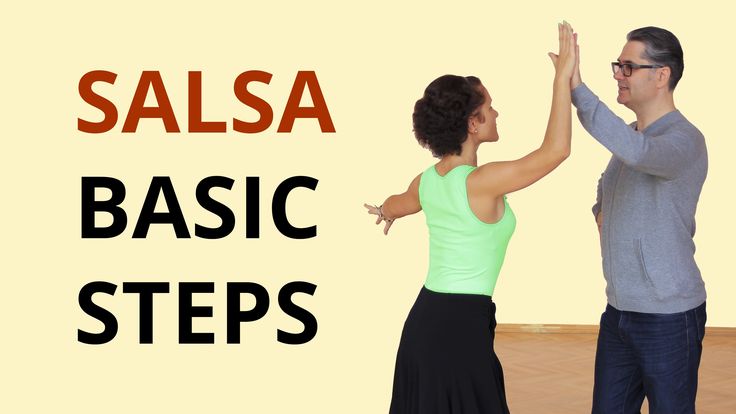 Shoes, clean, replaceable (sneakers, sneakers, ballet flats, moccasins, shoes, etc.)
Shoes, clean, replaceable (sneakers, sneakers, ballet flats, moccasins, shoes, etc.)
66) 038-88-91
ADDRESS:
Moscow, Bolshaya Decemberskaya, 3 building 2, (3 minutes walk from the metro station Ulitsa 1905 goda)
Art. metro Ulitsa 1905 goda, first car from the center, exit from the metro to the left up the stairs, go along the street. 1905 to the intersection with the Zvenigorod highway, turn right. Walk along the Zvenigorod highway to the Elektronika shopping center on Presnya. Turn right from the shopping center and walk 200 m to a two-story brick building (FixPrice sign). Our studio is on the ground floor.
Register now
WHAT IS SALSA AND HOW TO DANCE IT?
Rhythmic incendiary dance came to us from Cuba. Today, salsa is practiced by millions of people around the world. The Be One Dance School in Moscow offers several training options. You can buy a subscription for 8 classes, visit us for a month, six months, a year or all the time! Every day we hold parties where you can come absolutely free.
The Be One Dance School in Moscow offers several training options. You can buy a subscription for 8 classes, visit us for a month, six months, a year or all the time! Every day we hold parties where you can come absolutely free.
HOW LONG DOES IT TAKE TO LEARN TO SALSA?
Even for beginners, learning does not take too long. Anyone with perseverance can do it. The main thing is to choose a qualified and attentive mentor and do it yourself at the proper level. Then a quality result is guaranteed!
It is important to understand that different people need different amounts of time to master basic skills. Some will catch on the fly, while others will take time. The basic stage is to study the features and abilities of your own body. At this stage, you need to feel the rhythm, movements, hear your partner, say goodbye to stiffness and constraint! Forget about fear - and confidently move forward!
SALSA STYLES
Many styles of this dance culture are united by the main characteristics:
• Steps are made on 4 percussion rhythms.
• Mandatory Fast Dance Tempo.
• Complex motion trajectories.
THE HISTORY OF SALSA
Salsa is a hybrid of two styles - Puerto Rican and Latin American, in which elements of pop music, hip-hop and jazz performance culture are mixed. Elements of other rhythmic musical trends are also traced. The unique dance quickly won the hearts of millions, while each nation added its own elements to the dance. Such a direction is also popular in our country, for example, dancing salsa in Moscow is a rather fashionable activity that brings extraordinary pleasure.
This is a special rhythm, tenderness and passion at the same time, unrestrained energy, Latin explosive temperament and emotional outburst. A distinctive feature from other Latin American dances is pleasure, relaxation, brightness, and a positive attitude. In addition to improving mood, classes are useful for the whole body, since the training process leads to an improvement in the flexibility of the body, movements become smoother and more beautiful over time.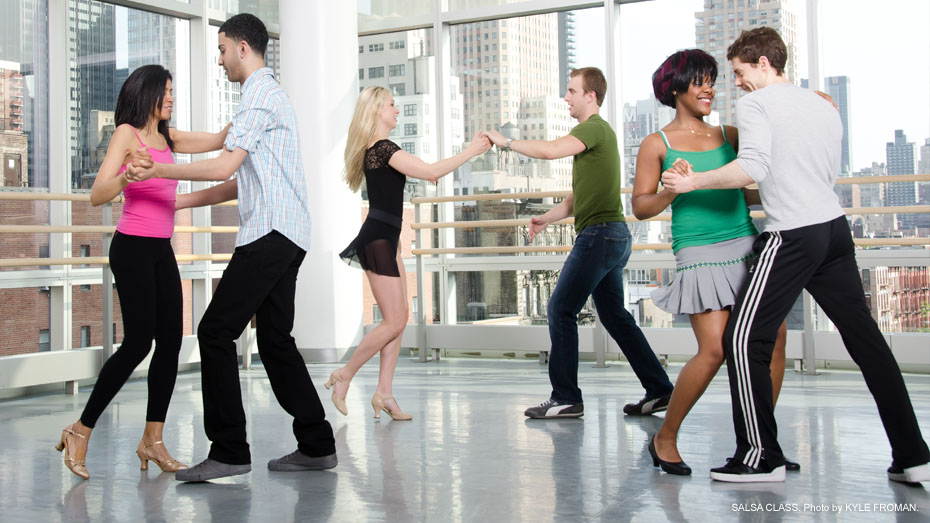
Training in salsa schools in Moscow can be carried out both with a single partner and with different ones. Both improvisation and a single style are welcome. There are simply no special restrictions! It is only important to listen and hear the partner, the music, its rhythm, and be sure to adhere to a constant count.
It is important to know that the basic step of the dance is calculated in 4 counts. This is done as follows: 1-2-3; then 5-6-7. It is noteworthy that the count for 4 and 8 is skipped, the rhythm of the steps looks like this: “quick-quick-slow”, then again “quick-quick-slow”. At the same time, movements to a missed account must be completed with a high degree of expression, attracting everyone's attention.
Among Cuban salsa lovers there are several versions of its origin. All of them are united by an important detail - the beginning was laid in the rhythm of the "Cuban dream", known since the 19th century.
One version attributes the origin of this dance to the "King of the Mambo", known as Tito Puente.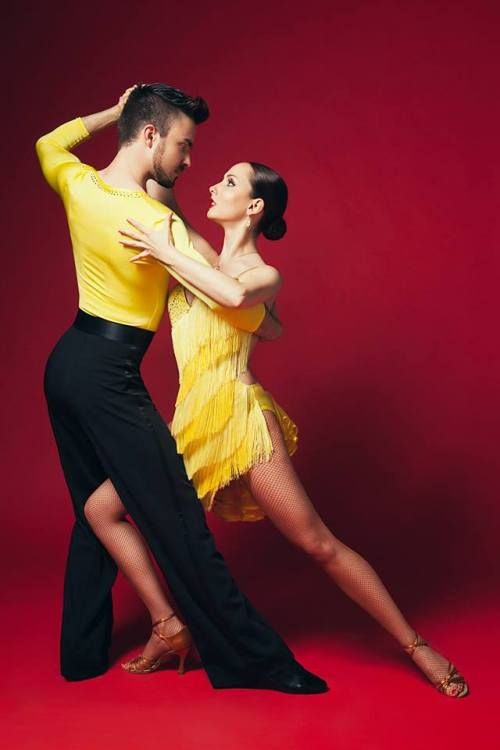 The emergence of the "sleep" culture is associated with relaxations in the policy of slavery and its subsequent abolition.
The emergence of the "sleep" culture is associated with relaxations in the policy of slavery and its subsequent abolition.
The dance is considered as a symbiosis of several main directions:
• Cuban rhythms: son (basic), danson, rumba;
• South American samba and tango rhythms;
• Caribbean rhythms: cumbia, captivity, bomb;
• North American rhythms: rock, swing, jazz.
Salsa, at its core, is incredibly incendiary and temperamental, which is why it has rapidly become popular on the planet. This is largely due to the amazing simplicity in its execution.
Today incendiary dance clubs are open and work everywhere. It is even known about the functioning of organizations that work on the development of salsa as a sport. A little over 5 years ago, the dance was included in the Olympics in Colombia, which was held in non-Olympic sports. Amateurs believe and hope that in time they will also be able to compete for real Olympic medals!
Salsa Casino
This style of salsa is the most common. It uses many complex combinations, turns and movements. You can dance as one couple, or with several partners at once, or changing couples in the dance. The central figure is a man, and the girl dances around him. The dance actively uses rotations and movements of the hands, there are many borrowings from Rumba, Cha-cha-cha.
It uses many complex combinations, turns and movements. You can dance as one couple, or with several partners at once, or changing couples in the dance. The central figure is a man, and the girl dances around him. The dance actively uses rotations and movements of the hands, there are many borrowings from Rumba, Cha-cha-cha.
Salsa LA, Los Angeles (Salsa LA)
Dance appeared at the end of 90s from mixing traditional salsa with hip-hop, breakdance and other styles. This salsa is a kind of "linear salsa" where partners dance in the same line, changing places. The main difference in style is the movement to a strong 1 beat of music. The Los Angeles style is characterized by a fast dynamic tempo, rapid acrobatic combinations that emphasize skill and less improvised solos.
Salsa NY
As the name implies, this style originated in New York. Here the emphasis is on the 2nd share, and the partner focuses on herself. This is the perfect style to show the feminine seductiveness in all its glory.


